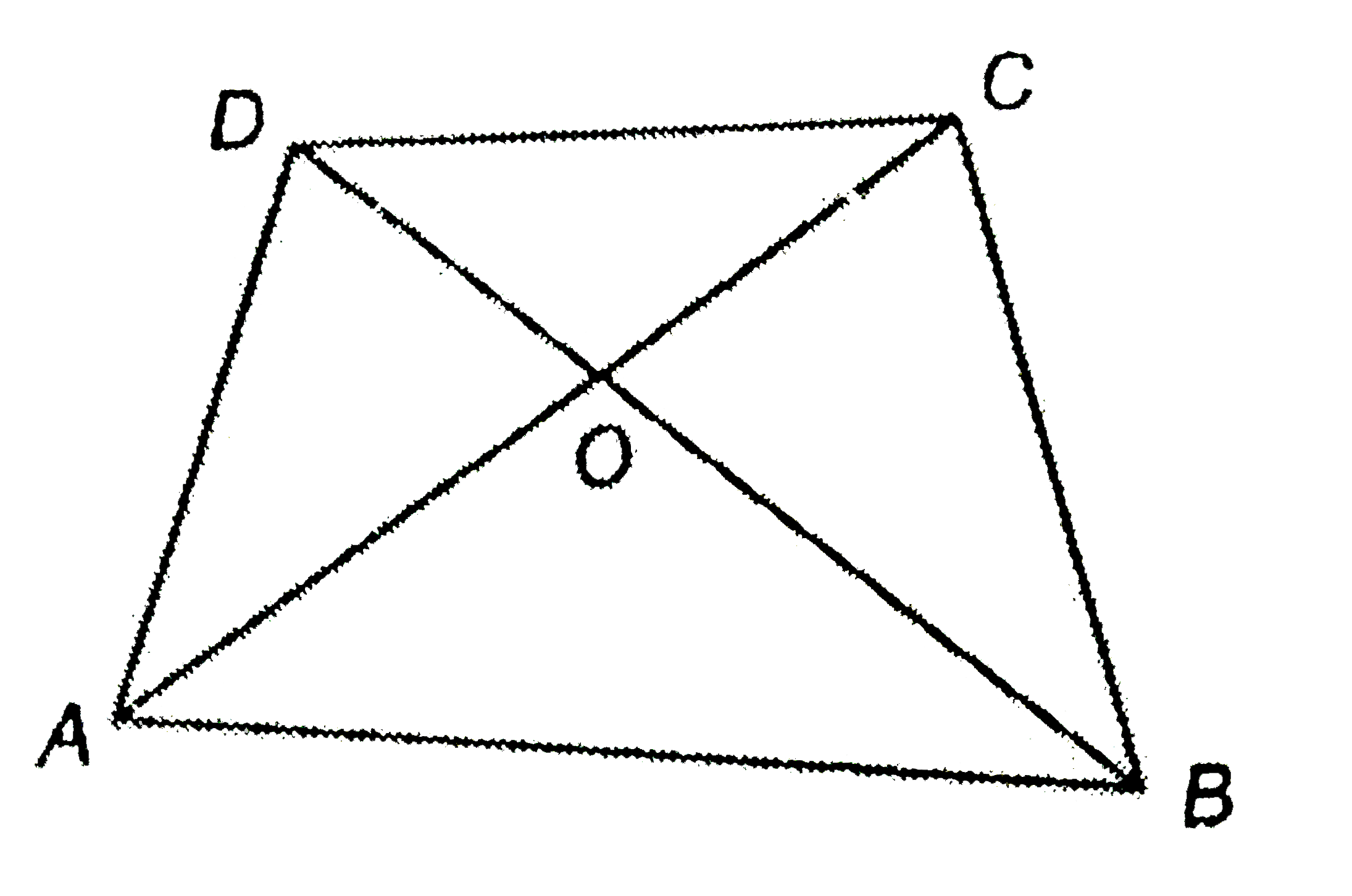ABCD is a quadrilateral whose diagonals are AC and BD. Which one of the following is correct?
−−→BA+−−→CD=−−→AC+−−→DB
−−→BA+−−→CD=−−→BD+−−→CA
−−→BA+−−→CD=−−→AC+−−→BD
−−→BA+−−→CD=−−→BC+−−→AD
The correct Answer is:B
To solve the problem, we need to analyze the relationships between the sides and diagonals of the quadrilateral ABCD using vector addition. Here’s a step-by-step solution:
Step 1: Understand the Quadrilateral and its Diagonals
We have a quadrilateral ABCD with diagonals AC and BD. We need to explore the relationships between the sides and diagonals using vector addition.
Hint: Visualize the quadrilateral and label the points clearly.
Step 2: Identify the Sides and Diagonals
The sides of the quadrilateral are AB, BC, CD, and DA. The diagonals are AC and BD. We will use the triangle law of vector addition to find relationships.
Hint: Recall that the triangle law states that if two sides of a triangle are represented as vectors, the third side can be represented as the sum of the first two vectors.
Step 3: Apply Triangle Law of Vector Addition
Consider triangle ACD:
- According to the triangle law, we can write:
→AC=→AD+→DC
Rearranging gives:
→DC+→AD=→AC
Hint: Think about how you can rearrange the vectors to express relationships.
Step 4: Consider Triangle ABD
Now, consider triangle ABD:
- Again, using the triangle law, we can write:
→AB+→AD=→BD
Rearranging gives:
→AB+→AD=→BD
Hint: Use the same approach as before to express the relationship in terms of the sides and diagonals.
Step 5: Combine the Results
Now, we can combine the results from both triangles:
1. From triangle ACD:
→DC+→AD=→AC
2. From triangle ABD:
→AB+→AD=→BD
Adding these two equations gives:
→DC+→AB+2→AD=→AC+→BD
Hint: Look for common terms in both equations that can help simplify the expression.
Step 6: Analyze the Options
Now we need to analyze the options provided:
1. →BA+→CD=→AC+→BD
2. →BA+→CD=→BD
3. →BA+→CD=→AC+→BD
4. →BA+→CD=→BC+→AD
From our derived equations, we can see that the correct relationship is:
→BA+→CD=→AC+→BD
Hint: Compare your derived relationships with the options carefully.
Final Answer
The correct option is:
B) →BA+→CD=→AC+→BD
We have a quadrilateral ABCD with diagonals AC and BD. We need to explore the relationships between the sides and diagonals using vector addition.
The sides of the quadrilateral are AB, BC, CD, and DA. The diagonals are AC and BD. We will use the triangle law of vector addition to find relationships.
Consider triangle ACD:
- According to the triangle law, we can write:
→AC=→AD+→DC
Rearranging gives:
→DC+→AD=→AC
Now, consider triangle ABD:
- Again, using the triangle law, we can write:
→AB+→AD=→BD
Rearranging gives:
→AB+→AD=→BD
Now, we can combine the results from both triangles:
1. From triangle ACD:
→DC+→AD=→AC
2. From triangle ABD:
→AB+→AD=→BD
→DC+→AB+2→AD=→AC+→BD
Now we need to analyze the options provided:
1. →BA+→CD=→AC+→BD
2. →BA+→CD=→BD
3. →BA+→CD=→AC+→BD
4. →BA+→CD=→BC+→AD
→BA+→CD=→AC+→BD
The correct option is:
B) →BA+→CD=→AC+→BD
Topper's Solved these Questions
Similar Questions
Knowledge Check
ABCD is a quadrilateral. AM and CN are perpendiculars to BD, AM= CN and diagonals AC and BD intersect at O, then which one of the following is correct?
AAO=OCBBO=ODCAO=BODCO=DOABCD is a quadrlateral in which BD and AC are diagonals then
AAB+BC+CD+AD<AC+BDBAB+BC+CD+DA>AC+BDCAB+BC+CD+DA=AC+BDDAB+BC+CD+DA>2(AC+BD)ABCD is a quadrilateral whose diagonals AC divides it into two parts, equal is area. Then, ABCD is
Aa rectangleBa ||gmCa rhombusDall of these
ABCD is a quadrilateral, the sides of which touch a circle. Which one of the following is correct?
View SolutionIn the adjoining figure, ABCD is a quadrilateral. Its diagonals AC and BD intersect at point 'O'. Prove that :
(a) AB+BC+CD+DA<2(AC+BD)
(b) AB+BC+CD+DA>(AC+BD)

View SolutionABCD is a parallelogram. If the bisectors of the angle A and angle C meet the diagonal BD at points P and Q respectively, then which one of the following is correct ?
View SolutionABCD is a cyclic quadrilateral of which AB is the diameter. Diagonals AC and BD intersect at E. If ∠DBC=35∘, Then ∠AED measures
View SolutionABCD is a quadrilateral whose diagnonal AC divides it into two parts, equal in are, then ABCD
View Solution
